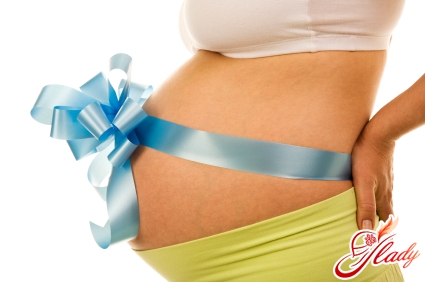 It's hard to recommend an absolutely perfect pose.for childbirth, but the ideal means for ensuring a comfortable birth is movement. The most incorrect attitude to movement during childbirth is the stereotypical idea that the woman in labor should lie on her back. Women are so fixated on this position that they are forced to suppress their instinctive desire to rise during contractions. Use your instincts to take the right position before or during a contraction and thus relieve the pain. Movement is one of the main components of a successful birth. A modern woman needs to be reprogrammed and returned to long-forgotten instincts. Women brought up in the traditions of the culture of different countries and peoples, which do not provide for a horizontal position during childbirth, mainly take vertical or inclined positions.
It's hard to recommend an absolutely perfect pose.for childbirth, but the ideal means for ensuring a comfortable birth is movement. The most incorrect attitude to movement during childbirth is the stereotypical idea that the woman in labor should lie on her back. Women are so fixated on this position that they are forced to suppress their instinctive desire to rise during contractions. Use your instincts to take the right position before or during a contraction and thus relieve the pain. Movement is one of the main components of a successful birth. A modern woman needs to be reprogrammed and returned to long-forgotten instincts. Women brought up in the traditions of the culture of different countries and peoples, which do not provide for a horizontal position during childbirth, mainly take vertical or inclined positions.
Why is vertical labor better than horizontal?
First of all, let's answer the question of why the poselying on the back is uncomfortable for the mother and not entirely safe for the baby. First of all, it is the law of gravity: when a woman in labor lies on her back, gravity pulls the baby toward her back. This abnormal position leads to two abnormal things: it causes back pain for the mother and, due to pressure on the blood vessels running along the spine, reduces the blood flow to the uterus. Pathological phenomena begin to snowball. The mother's blood pressure may drop, the baby may not receive enough oxygen, the uterus contracts less effectively, labor slows down, and the mother is forced to push the baby "uphill." If the mother's legs are raised up, she has to cut the perineum. As a result, both the mother and the baby suffer. Let's consider what happens when the mother sits, stands, or is supported by a partner. Gravity pulls the baby down, since the mother's position is in harmony with the forces of nature. It is easier for the baby to pass through the birth canal, and the cervix opens faster. The baby passes through the pelvis at the right angle and encounters the least resistance in the birth canal. When the mother does not experience additional pressure on her back, she feels less pain. Contractions become more effective, labor proceeds faster. The connective tissues of the pelvis weaken under the influence of pregnancy hormones, they become more mobile. When you are in a vertical position, the birth canal becomes wider, they more easily adapt to releasing a small person with a large head and broad shoulders. If you are lying or sitting, the bones cannot move freely and the birth canal narrows. In addition, the vertical position is more gentle on the perineum. In this case, the need for an episiotomy disappears, and ruptures are unlikely. Modern researchers have provided a lot of evidence of the advantages of vertical positions for childbirth. When a woman moves during labor and gives birth in a vertical position, she experiences less pain, she needs less pain relief. In addition, the labor time is reduced, episiotomy is done less often, the risk of ruptures is small, fetal electrical monitoring shows a more satisfactory condition of the child, whose body is better supplied with blood and oxygen. Childbirth in vertical positions has long been a part of the practice of midwives, but is still unfamiliar to most obstetricians. There is no picture in obstetrics textbooks showing a mother giving birth in a squatting position, a partner supporting her from behind, and an obstetrician kneeling and receiving the child from below. Do not think that if the doctor kneels, this will diminish his professionalism. The best position for childbirth is the one that is comfortable for you. Choose a place for childbirth where you will be free in your choice, and an obstetrician who will support your choice. There is no position that a mother can stay in throughout the entire labor. Below we provide a description of some of the most comfortable positions. Squatting is the best position for childbirth. It is suitable for both mother and child for the following reasons:
- accelerates the process of childbirth;
- expands the pelvis;
- relaxes the muscles of the perineum;
- relieves pain in the back;
- improves the supply of oxygen to the child;
- promotes an easier birth of the afterbirth.
Even with a small pelvic capacity and a large fetusThe chances of a vaginal birth in this position are significantly increased. When you are sitting on all fours, the angle of your pelvis is most convenient for the baby to move along the birth canal, and gravity helps him with this. If you give birth lying on your back, the baby has to get out of a narrow and curved passage. Change the position, and a straighter and wider path opens up for him. This position is best for speeding up labor. Contractions become more intense, since the baby's head presses on the cervix. If contractions become too painful while squatting, but labor is going well, try to take a more comfortable position for you. Squatting is almost never necessary during the first stage of labor, when the cervix begins to open. Do not tire your legs and waste energy. They will come in handy during pushing. It is best to squat when the birth attendant says that the cervix is fully dilated and the second stage of labor is approaching or beginning. The urge to push is your cue to squat down. When a contraction starts, push and then sit back or forward on your knees to rest before the next contraction. In this position, the second stage of labor is faster, but may be more intense. It is unlikely that you will be offered the option of squatting at a local maternity hospital. This position must be learned during pregnancy, and you should definitely have the help of your partner or assistant. Your partner should learn to support the woman in labor in advance so that you can trust yourselves and each other. It is better for your partner to be barefoot. Stand behind the woman in labor and spread your legs shoulder-width apart. Take the woman in labor under the armpits and let her hang in your arms. Keep your back straight, bend your knees slightly so that the woman in labor can rest her buttocks on them. You can lean your back against a wall or sit behind the woman in labor. Support her until she kneels or sits back. The more you practice, the easier it will be to squat during labor. Stand with your feet shoulder-width apart and slowly (not jerking!) lower yourself down. Spread your knees to the width of your feet, and rest your heels on the floor. If you have trouble keeping your entire foot on the floor, wear shoes with a small heel. To help you remember to keep your knees apart, bend your arms and rest your elbows on the inside of your knees. Squatting can be quite tiring, so try the following variations of this pose:
Squatting with support
To support you, your partner stands behind you, leaning their back against a wall, the headboard, or sitting on a chair. Or they can sit in front of you and hold your hands to keep you balanced.
Squatting with the support of
This pose achieves the most effective results.use of gravity, and the pelvic tilt is optimal for childbirth. With your legs shoulder-width apart, you hang on your partner's arms. In this position, not only the body but also the mind relaxes. The best way to achieve a satisfactory birth is to submit to your body. Relax your stomach, as if you were eleven months pregnant. Let it hang more and more with each contraction. If you try to tuck your stomach in and tense your muscles, this can cause you pain. In addition, you can lean against a wall, sit on a chair, hold on to the edge of a table, the back of a chair or bed. You should not try to jump on all fours, as this greatly stretches the muscles and ligaments. Some women speed up labor and reduce pain by rocking from side to side. Do not overexert yourself. Use pillows, furniture, walls, people to support your body - anything that will help you reduce the tension in your legs, relax your uterus and fully switch your attention to childbirth. Birthing partners are more tolerant of births in a side-lying or semi-sitting position because they can see what is happening. But birth attendants can access mother and baby in any position. A natural progression from a squatting position is to kneel. When contractions become too strong, you can rest kneeling on a cushion on the floor, leaning against a chair, or on all fours. Kneeling is especially helpful for back pain, when trying to turn a breech baby, or to slow down a particularly vigorous labor. If you don’t want to slow down the labor, position your belly as vertically as possible and spread your knees to widen your pelvis. And don’t forget to put pillows under your feet and head. When kneeling, many women have a natural urge to rock their hips from side to side. This helps the baby turn from their breech to their head. If you feel the need to change positions, do so. If you are using a birthing bed, kneel on the lower part and lean on the upper part. Squat and place one leg on your knee. Switch legs periodically and try to rock from side to side between contractions.
Knee-elbow position
A very valuable variation of the kneeling poseis the knee-elbow position. You can also take the so-called "fetal position", that is, lower your head below your pelvis. In this position, the baby's head stops pressing on the cervix, which softens the contractions and reduces the desire to push, if necessary (for example, when the cervix cannot open completely). In this position, you can slow down too violent labor. During the first stage of labor, you may find it more convenient to walk a lot and stop only during contractions. Instead of just standing, transfer some of your body weight to a support. To do this, lean on a wall, chair or other piece of furniture. You can also lean on your partner, while placing one leg on a chair. At this moment, the man will especially feel how much you need him.
Posture sitting
If contractions appear in a squatting positiontoo strong for you, you can probably handle them sitting up. Sit astride a low stool, toilet, chair, or corner of the birthing bed. It is best to sit with your legs wide apart on a low stool. If a woman sits during the second stage of labor, it passes more quickly than if she lies down. In this position, the pelvis becomes wider (but not as much as in a squatting position), bleeding during labor is noticeably reduced, and the baby’s oxygen supply is improved. By the way, the toilet seat is a natural birthing throne that is always at hand. Its height is ideal for labor, and the pelvis and legs have long been accustomed to it. And finally, it may be the only place in the world where the woman in labor can have privacy. The toilet not only serves as a refuge, but is also very important from the midwife’s point of view. Mothers often go to this familiar place to resume labor. When a woman in labor sits on the toilet, contractions become stronger. The tensing of the abdominal muscles and the movement of the pelvic bones during a bowel movement are similar to the second stage of labor. In this comfortable position, the bladder empties more readily, giving more room for the baby. This position (knees apart, pelvic muscles relaxed) is the most comfortable for labor. To reduce the severity of contractions, lean your elbows on the table next to the seat. Needless to say, medical personnel are deathly afraid that if the toilet is used during contractions, it will be used for labor. To push, the mother sits on the toilet until the head emerges, and then stands up to deliver the baby, who is caught by the birth attendant. If labor is long, you will not be able to stand the entire time. Many women find contractions easier when lying on their side. Theoretically, it is better to lie on the left side so that the uterus does not press on the blood vessels that run along the right side of the spine. Although lying on your side means you are without the help of gravity, your uterus is still not pressing on your back. This position is great for resting between contractions and can help slow down a labor that is too intense. Make yourself a comfortable nest of pillows by placing one or two under your head and one under your belly, upper leg, and back. During a contraction, you can lie down to slow down the labor or quickly roll to your knees and into an upright position. If you decide to push while lying on your side, your birth attendant or partner can lift your upper leg to increase the capacity of your pelvis. Whenever possible, try to invent your own positions and movements that will help you. During labor, use any positions that work. Freedom of movement during labor and upright positions are proven methods for having the most satisfying labor. In conclusion of this chapter, we will repeat once again the tips for making progress in labor:
- If you are forced to stay in bed for medical reasons, often change your posture.
- For relaxation of muscles and consciousness, use massage, imagination, breathing exercises, music, etc.
- Every hour, release the bladder; A full bladder causes painful spasms.
- Use the help of gravity: go, stand on your knees, squat, sit.
- Between contractions, take a rest and let go of the tension from the previous contraction. Don't allow yourself to feel fear in anticipation of the next contraction.
- Raise your energy level: snack if you get hungry; Drink to avoid dehydration.
- If childbirth becomes difficult to bear, immerse yourself in a bath or take a shower.
- Use the constant support of your partner and professional assistant.
We recommend reading:









